An apartment in Singapore with a special room for tea and wine appreciation
An understated home designed for a couple who enjoy the finer things in life.
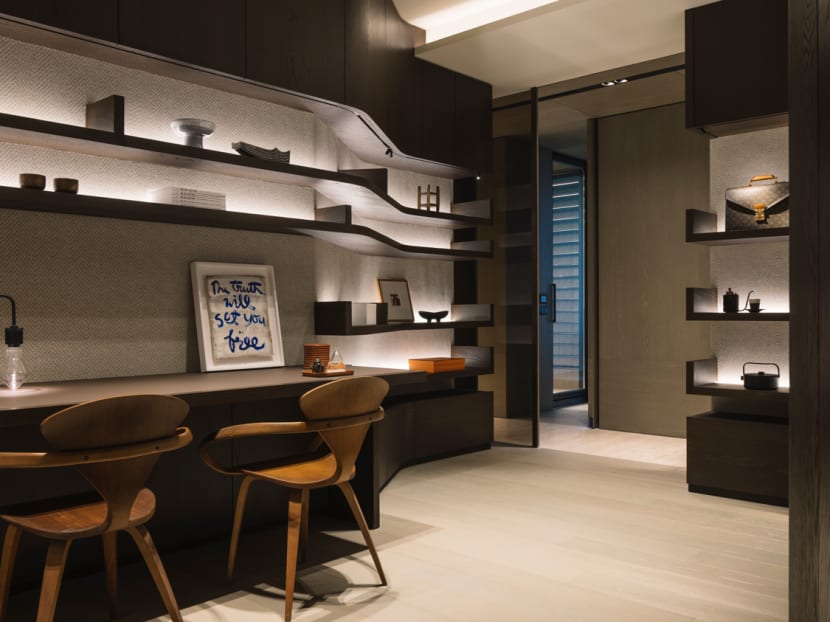
The study features curved shelving that camouflaged the awkward angles in the room. (Photo: Studio Periphery)
It used to be that the idea of a luxurious home would require gilt touches at every turn but many homeowners who are well travelled and educated now defer to a more subtle interpretation of luxury that constitutes quality materials, thoughtful details, contemplative surroundings, bespoke touches and space for their hobbies.
“Luxury is a reflection of a life well-lived. A home is a reflection of one’s life, and it is usually inferable from the owner’s possessions that fill the space. However, we believe that an owner’s personality and tastes only evolve and is enriched with time, and that it’s the appreciation of this on-going story that really defines luxury. Every space in this home forms a part of the story of the client’s life,” said Terence Chan, the founder of Studio Terre that was engaged to design this apartment for a couple in their 30s.
“The couple share an affection for all things relating to tradition, as well as for the fine pleasures of modern day. In particular, the husband has a special fondness for tea and wine appreciation,” Chan elaborated. Formerly based in another country, they moved here to make Singapore their permanent home. The apartment is located within The Marq, a condominium in the heart of town designed by SCDA Architects. This particular 3,000 sq ft apartment came with four rooms and a lofty living room.
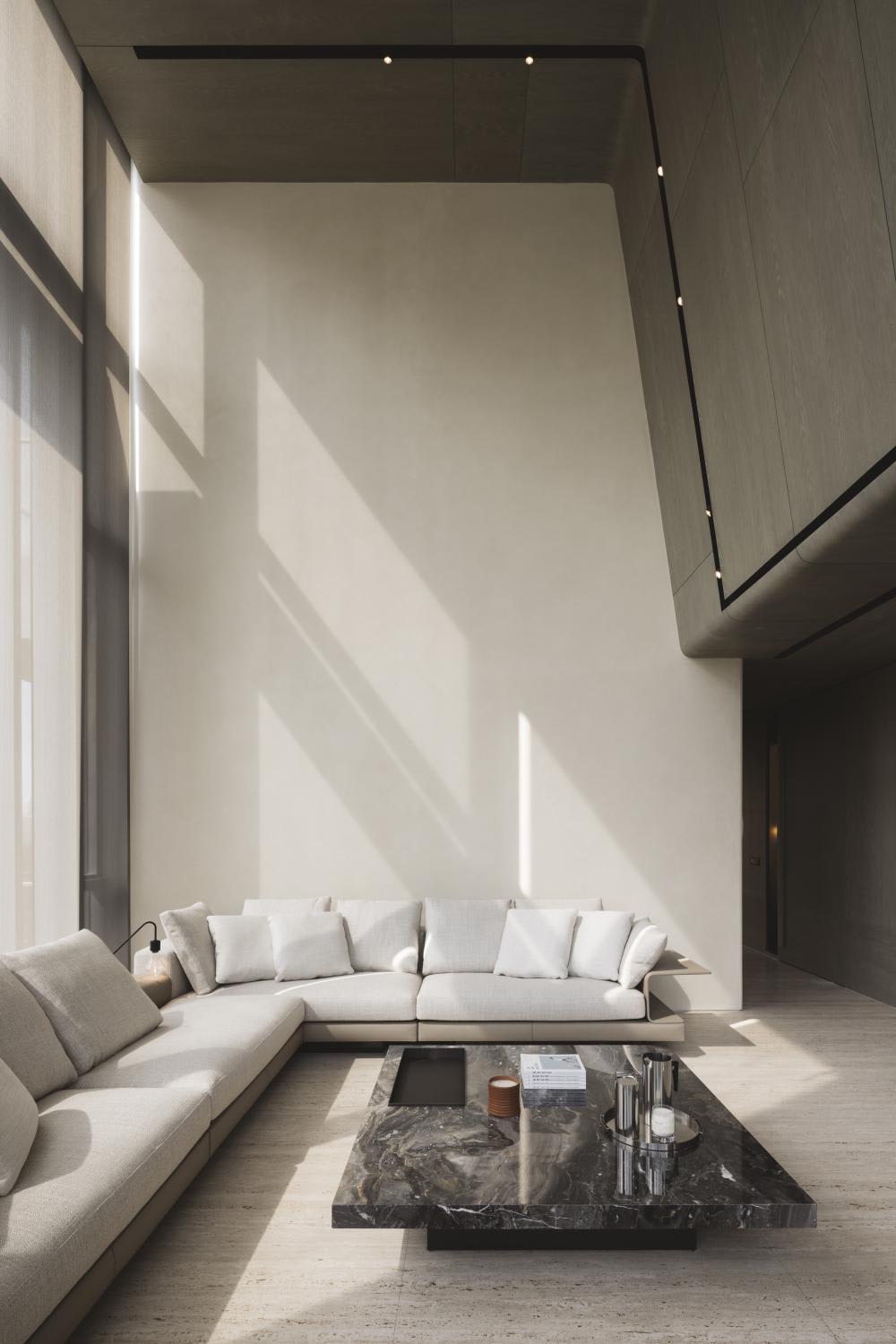
“Beginning from preliminary meetings, the wife had already pictured in her mind the atmosphere of their dwelling through a series of mood images. Noticing that most of the chosen images shared a similarity for tranquil and warm-toned atmospheres, we curated a palette of pared-down shades – from beige stucco finishes for the walls and ceiling to warm-grey timber panelling and matte grey stones,” explained Chan, who is trained as an architect and founded the boutique design studio in 2006.
An atmosphere of calm is perceptible upon entry from the private lift. Stepping into the corridor, one encounters a serried band of solid timber screens that hide insipid window frames. The louvres are manoeuvrable so that the owners can determine the level of shade at different times of the day. It is in a light-grey finish that was specially customised to adhere to the neutral palette the owners desired.
To the left of the foyer is the living room, and Studio Terre had emphasised the voluminous proportions with timber panelling in the same shade as the screens. It clads the walls and ceiling of the corridor, which a lower height, before curving up toward the ceiling of the taller part of the room.
The light track and air-conditioning vent were designed into the timber ceiling to maintain the streamlined interior architecture. Rounded ceiling and wall corners soften the edges in the home, highlighted architectural designer Rifdi Sng.
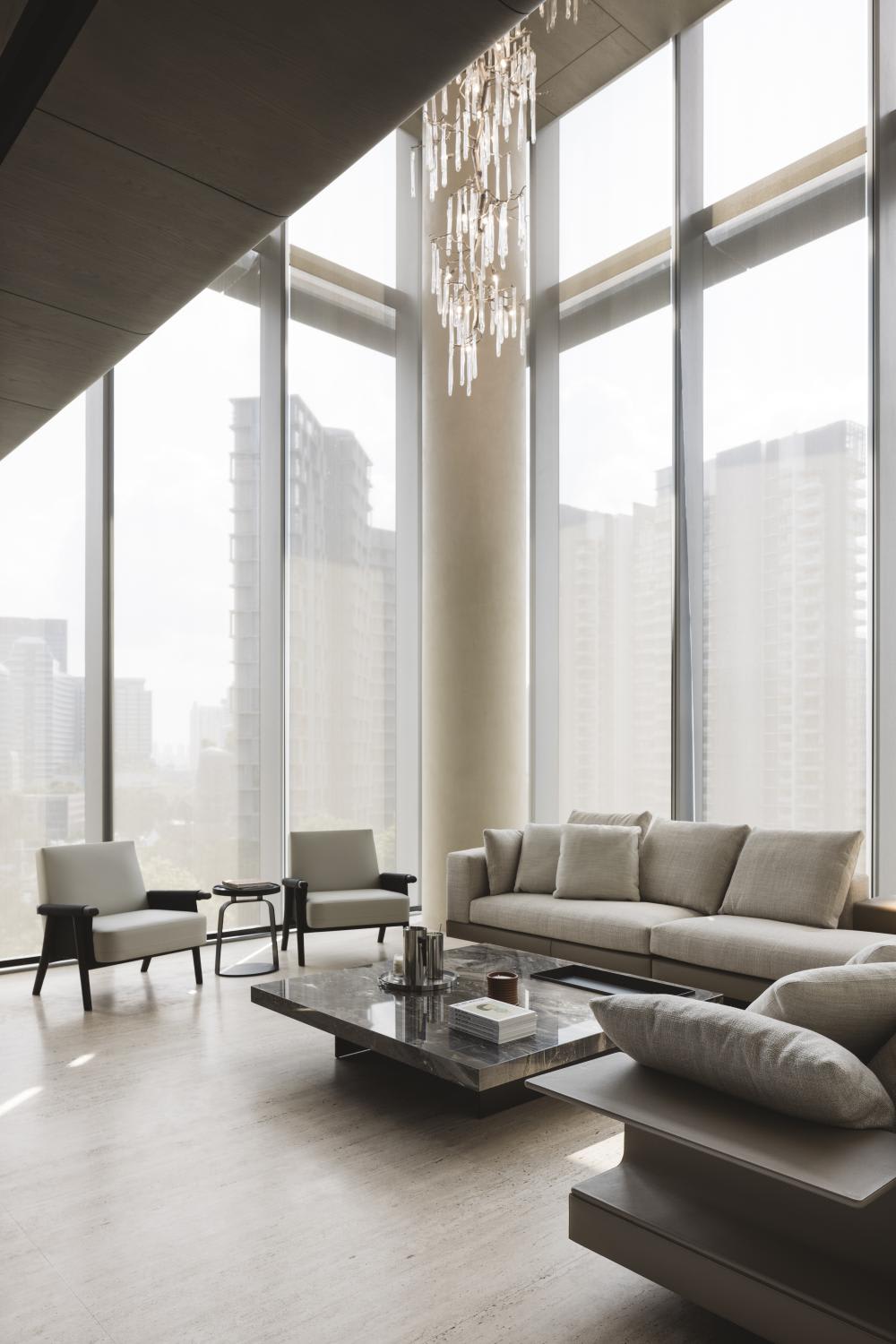
Hanging from the ceiling is a chandelier from Serip with glittering shards draped from a thin, bronze-coloured frame textured like tree branches. Founded in 1961 in Portugal, the lighting brand is known for organically shaped light fixtures inspired by nature. The sculptural piece is a highlight in the minimalist interior.
“In response to the owners’ brief, the general direction that we had in mind was to first establish a backdrop of neutral tones, and then to imbue character into each space through a mix of carefully curated furniture and light fittings. Decorative and architectural light pieces from Michael Anastassiades, Serip, Apparatus Studio, Articolo and Viabizzuno were chosen to complement existing functional light fixtures, and to highlight the subtle edges and surface treatments in the original design. Iconic furniture from Liaigre and Minotti grace the home with their timeless forms and materiality,” said Chan.
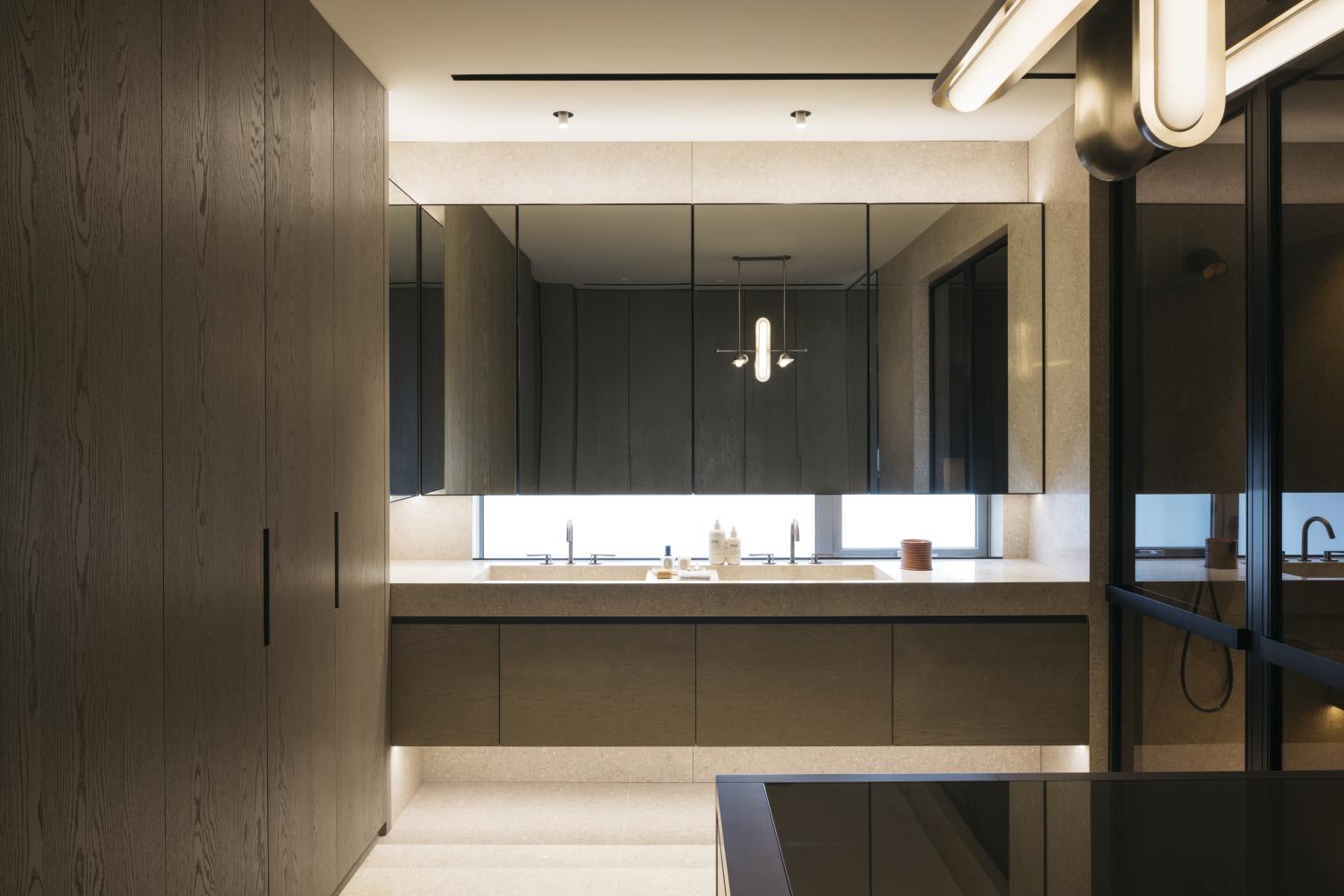
A large L-shaped Minotti sofa with cream-coloured upholstery was selected for the living room. Two dark timber-framed lounge chairs from Liaigre and a Minotti coffee table with prominent dark grey veins are some variations to the dominant light-coloured scheme, as are dark-stained paulownia timber joinery and bronze light switches.
As the owner wanted seating to fill the whole living room space, the television was hung on a wall at the corridor. “We chose a very thin television set and did away with a normal long console design,” said Sng. Instead, he designed a square plinth to display sculptures or vases as focal points at one end of the long corridor that runs down the length of the home. It also hides the AV equipment.
The warm grey timber is also used for the kitchen cabinetry. Grolla beige marble from Italy that is used for the island counter was selected to match the existing travertine floors. “It’s a very hardy material, sometimes even used to clad swimming pools,” shared Sng. The same material is used for the cooker hob and wrap bathrooms. The homogeneous effect enhances the calm and uncluttered feel of the apartment.
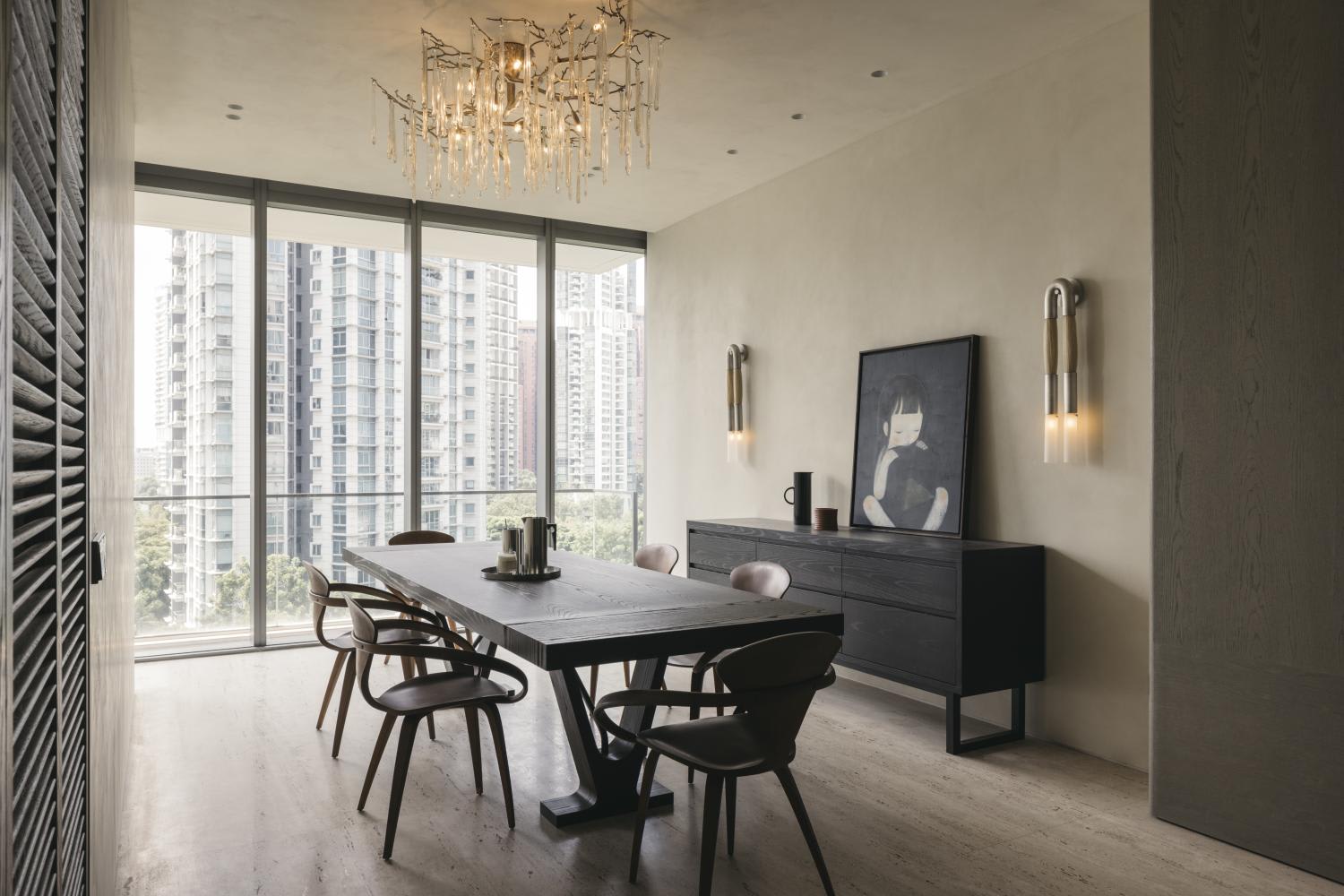
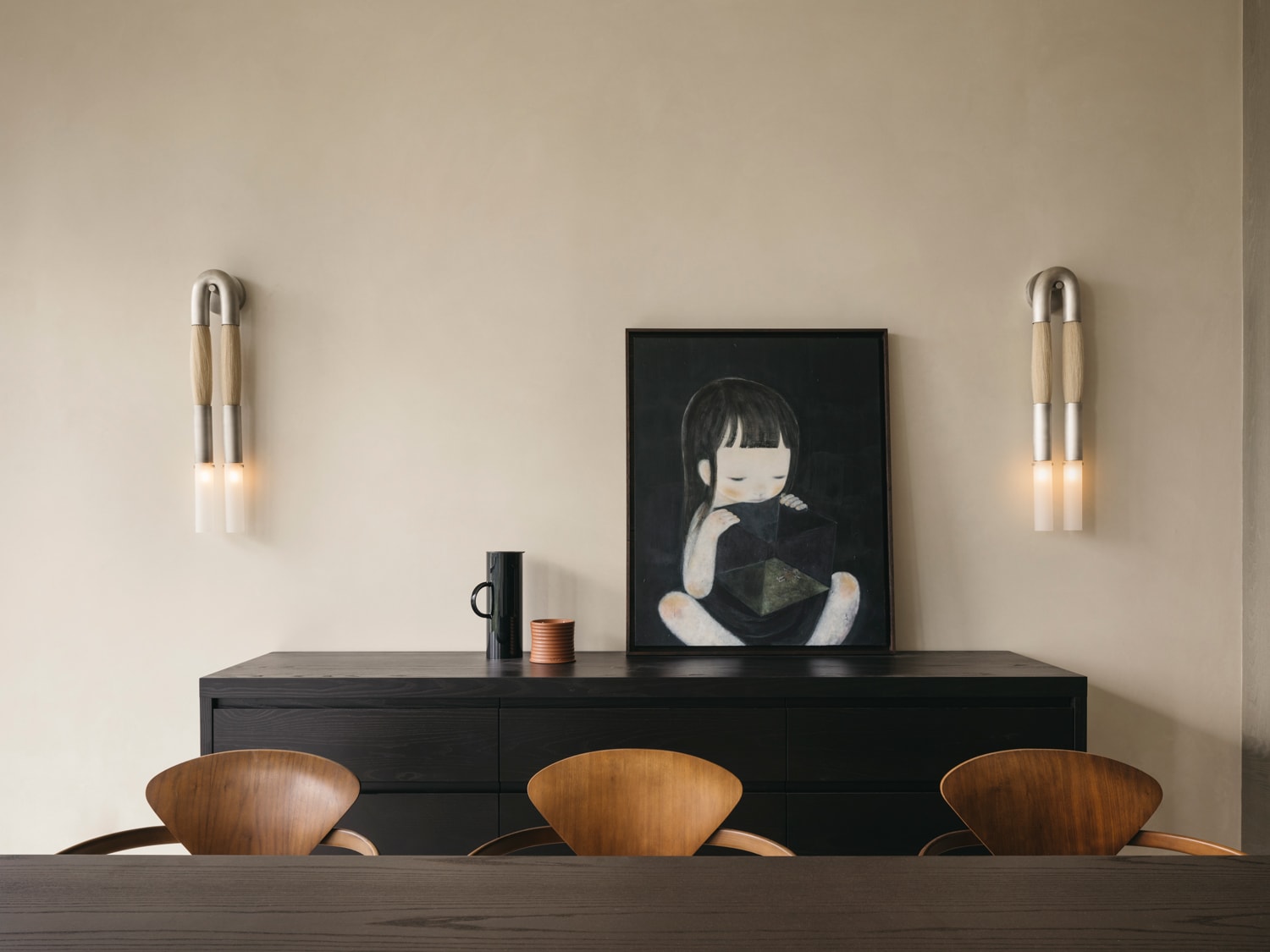
In the adjacent dining room, another lighting fixture from Serip is a highlight. A grey timber panel at one side opens to reveal a column of shelves filled with an assortment of wine and whiskey glasses for the owner to access easily when entertaining guests.
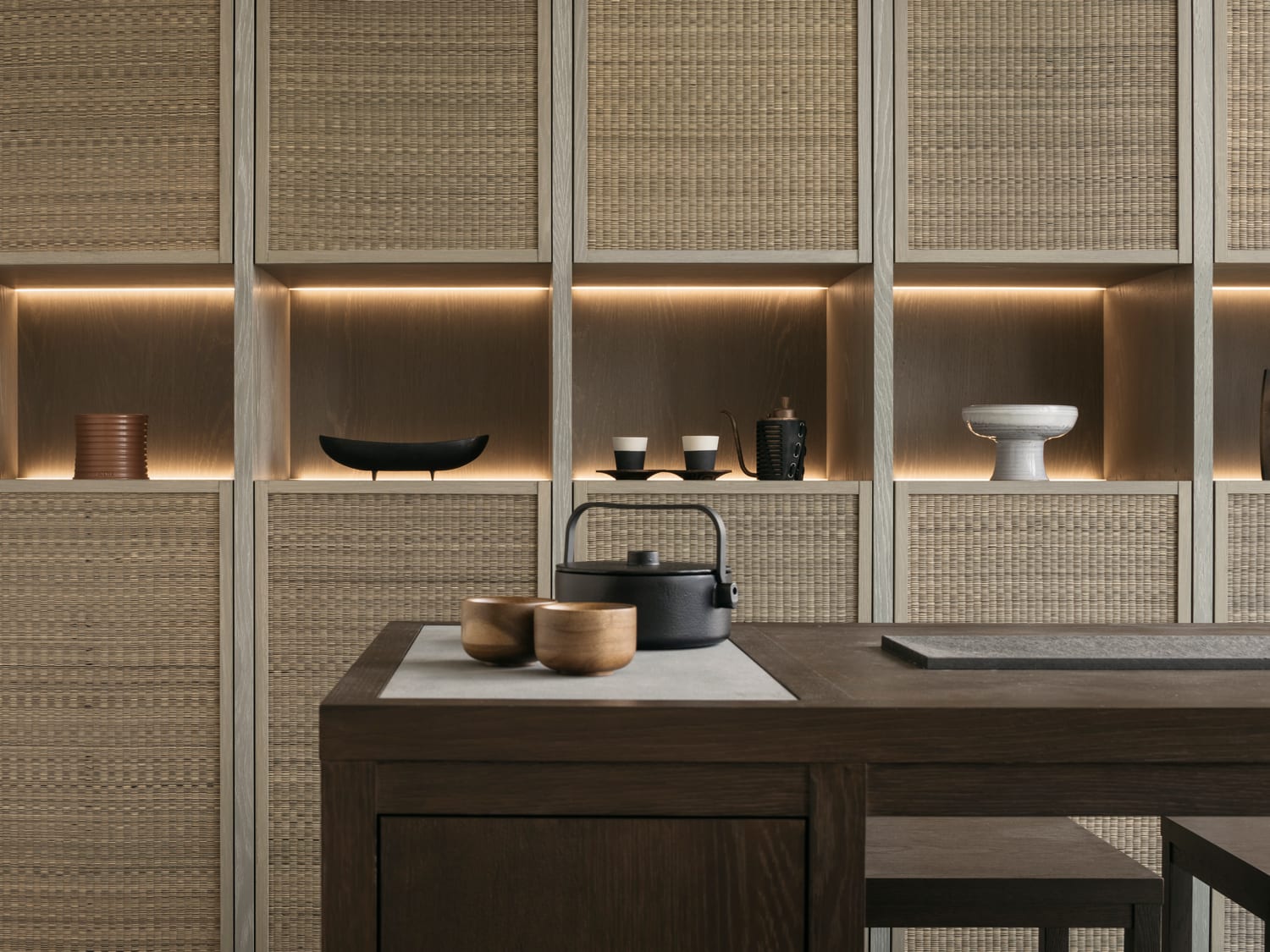
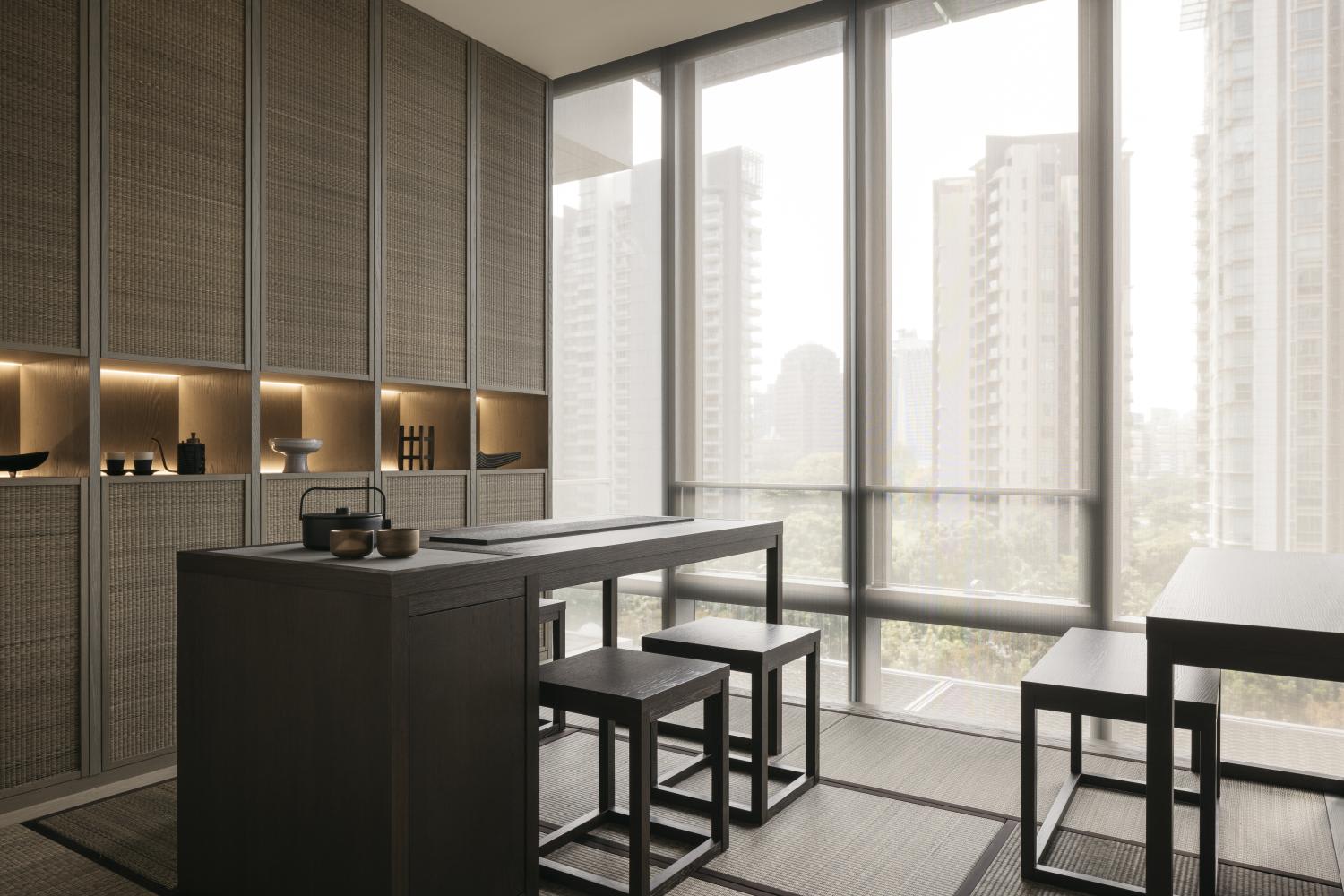
Other entertainment facilities were placed next door. There is a room for storing wine and another specially designed for the owner to enjoy and serve tea to guests. In the latter, tatami mats line the floor, as well as the doors of the cabinets. A row of shelves displays tea ware. “We are especially fond of the tatami tea room. In fact, it is our favourite space in the house, with the scent of tatami lingering delightfully in the space,” Chan pointed out.
The owner places emphasis not just on the tea itself but also the ritual of preparing it. Chan responded with a special set up for the process in the form of a customised dark-stained paulownia timber table with stools on both sides. A long granite slab was embedded into the table. The owner places the teacups on the slab and pours hot water over to warm them. The water drains out of small holes drilled into the slab. Once the tea is brewed at the correct temperature, both host and guests will sit and enjoy its flavours. The use of tatami, as well as washi wallpaper from Japan, add a sense of ceremony to the procedure.
Details such as these give the home a sense of individuality. Another example is the kitchen’s bronze sliding door handle with a three-dimensional profile inspired by Italian architect Carlo Scarpa’s works. It is a decorative accent in the streamlined surfaces along the long corridor, which was layered with several doors to segment private and public spaces when necessary.
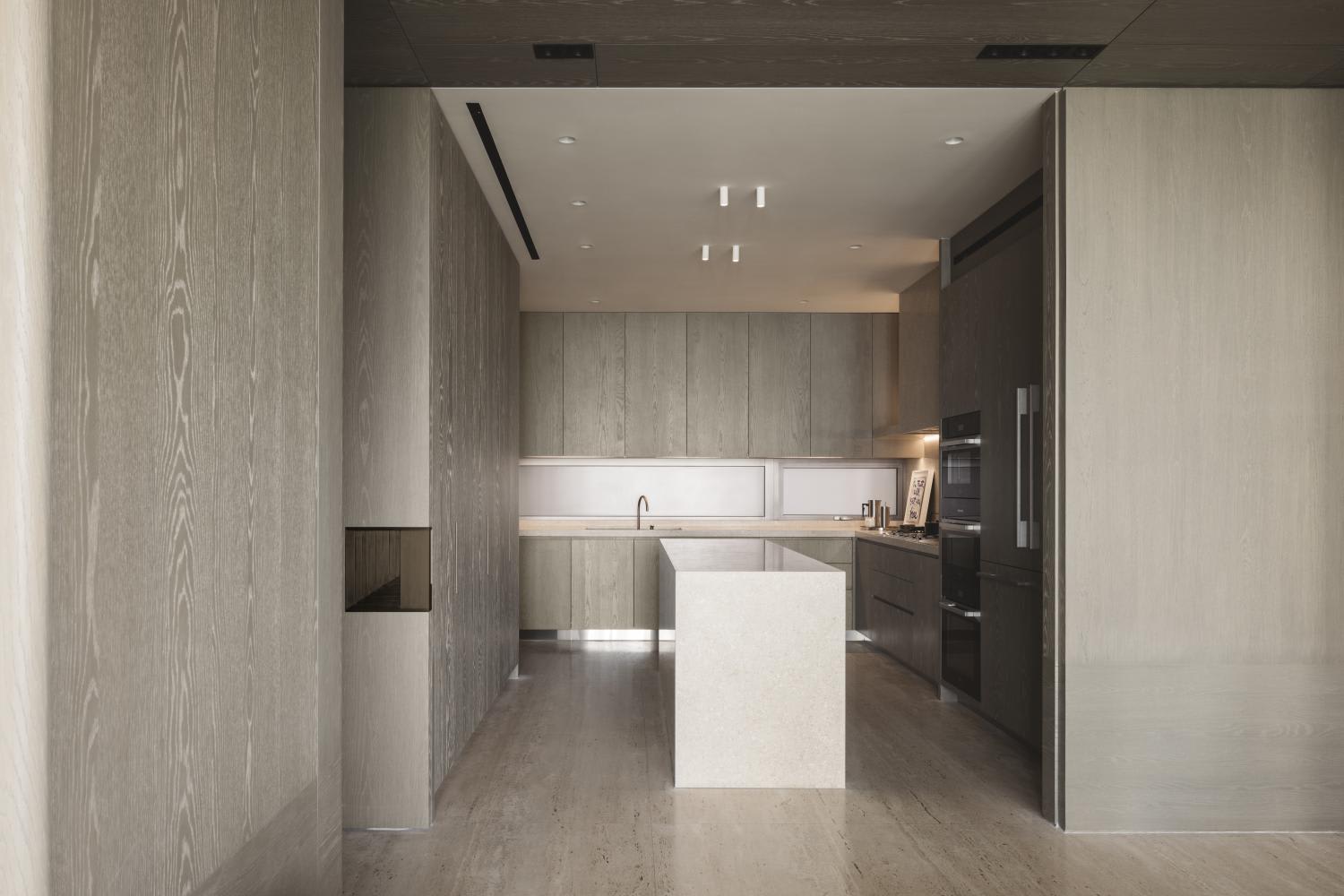
Across the tearoom is the study room, which Chan has detailed with two rows of undulating dark-timber bookshelves. The curves mitigate the awkward shape of the room that kinks toward the rear. On the shelves are displayed the owner’s prized collection of Japanese whiskeys.
“This home presents a neat array of spaces where everything seems to fit in place. But lots of attention to detail – down to the material selection and reference to design history – went into achieving such an outcome,” said Chan.
He added: “We feel that it takes a certain refinement of life experiences and knowledge to curate a collection of masterpieces together. As designers, we hope to transform our own experiences to realise a home that clients can cherish and take pride in.”











